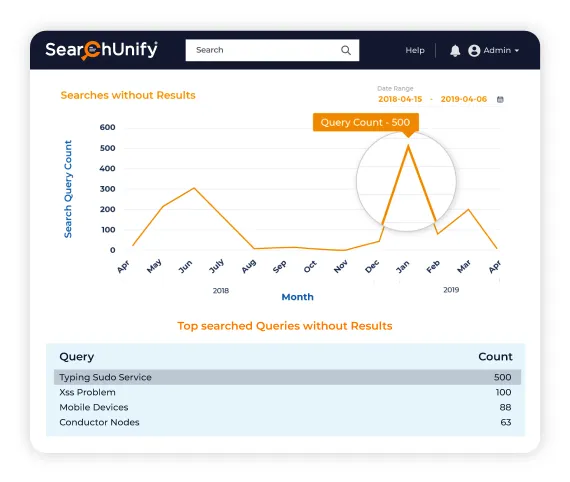Your Budget Is About to Get Fucked (And It's Not SearchUnify's Fault)
Everyone focuses on the SearchUnify license cost, but that's like worrying about the gas in your Ferrari while ignoring the insurance payments. The real money gets eaten by AI adoption's invisible burden - the shit that happens after you sign the contract.
Data Migration Hell: "Quick connector setup" works great if your knowledge base isn't a mess. Last deployment took forever debugging why AI responses disappeared - someone reassigned case ownership and broke field mapping. Got "INVALID_FIELD_FOR_INSERT_UPDATE: Field not accessible." Real helpful.
Expect to spend a lot of time mapping fields between Confluence, SharePoint, and whatever other systems you use.
Integration Issues: Every system has problems. Salesforce throws UNKNOWN_EXCEPTION, Zendesk hits rate limits with "HTTP 429: Too Many Requests", and ServiceNow times out randomly. Each integration needs debugging time for weird edge cases.

This looks clean until your SharePoint connector breaks because someone renamed a folder in 2023 and took down production for 2 hours
The "Change Management" Money Pit
Your support team loves their current workflow. They've memorized which ticket goes where, they know exactly how to escalate without looking stupid, and they can find information in your broken knowledge base through pure muscle memory.
Now you're asking them to trust an AI that might give wrong answers or route urgent tickets to the wrong place. Expect months of "the old system worked fine" complaints while productivity drops during the learning curve.
The political resistance hits from every angle: Security screams about "AI accessing customer data," Finance questions why you're paying for both the old system AND the new one during transition, and HR insists on "proper change management training" that adds another month to your timeline. Legal will want to review every AI response template, and Compliance will demand audit trails for everything the AI touches.
Budget for extra support staff during the transition, because your existing team will be spending more time fighting with the AI than helping customers for the first quarter.
Infrastructure Reality Check
SearchUnify's single-tenant architecture sounds great until you realize what that means for your infrastructure budget. You're not sharing resources with other customers, which is awesome for security and performance. It also means you're paying for dedicated capacity whether you use it or not.
API Rate Limits: Your Salesforce integration hits governor limits faster than you expect when ten AI agents start querying simultaneously. We found this out the hard way during Black Friday when all our AI responses just started failing with "REQUEST_LIMIT_EXCEEDED" errors. Either upgrade your SF license or implement request queuing that slows everything down. Pick your poison.
Search Index Size: Every document, ticket, and knowledge article gets indexed. That 50GB of PDFs from 1997? That's getting processed too, and it'll slow everything down until you clean it up. Plan for 2-3x your expected storage requirements.
Training: The Never-Ending Expense
AI agents learn from your data, but they learn your bad habits too. If your knowledge base is full of contradictory information (and it is), the AI will confidently give contradictory answers.
Expect to spend a lot of time cleaning up your content before the AI makes sense, then ongoing work keeping it accurate as your product changes. This isn't a one-time thing - it's permanent overhead.
Speaking of broken shit, our AI started telling customers to "try turning it off and on again" for database connection errors because someone copy-pasted that into our troubleshooting docs as a joke in 2021.
The Development Time Nobody Budgets
Configuration Hell: Each of the ten AI agents needs to be configured for your specific business logic. The Support Agent needs to know your escalation rules, the Knowledge Agent needs to understand your content taxonomy, and the Escalation Manager needs to recognize when customers are actually pissed vs. just confused.
Custom Workflow Development: Your support process won't match SearchUnify's defaults because your business is special (they all think they're special). Plan for a lot of workflow customization to match existing processes, or spend even more time retraining your team.
Testing Everything: You can't just flip the switch and hope it works. Every integration needs testing, every workflow needs validation, and every AI response needs review. Plan on weeks of testing before going live. Don't try the "deploy Friday afternoon" approach. Bad idea.
When The Demo Promises Meet Production Reality
SearchUnify's SearchUnifyFRAG™ technology is impressive, but it's not magic. It can't fix your organizational problems:
- If your teams don't communicate now, AI won't fix that
- If your knowledge base is shit now, AI will just find the shit faster
- If your escalation process is broken now, AI will just automate the broken process
Look, the platform works great when you have good data and clear processes. If you don't, you're just going to automate chaos more efficiently.
The Real ROI Timeline
Marketing says you'll see value in 30-90 days. Engineering reality says 6-9 months before you stop putting out fires and start seeing actual benefits. Plan accordingly, and don't let anyone pressure you into unrealistic timelines just because the CEO saw a great demo.
